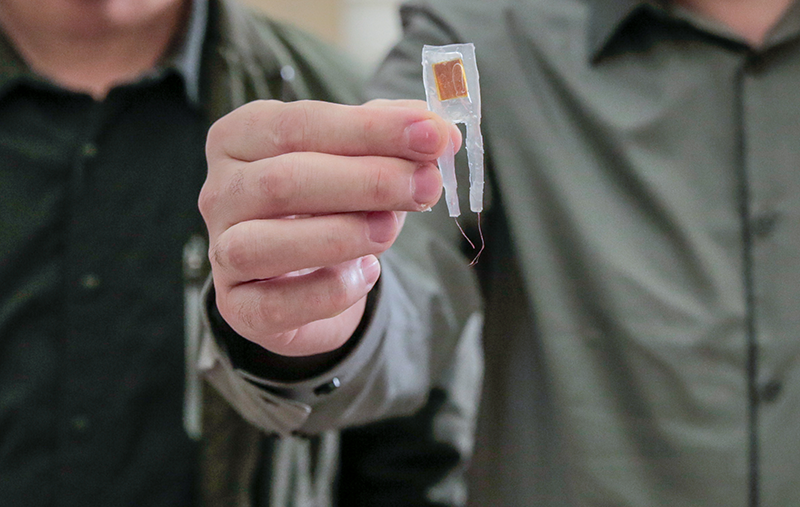Researchers at the University of Wisconsin-Madison have found a drug-free solution to fight obesity. They developed a tiny battery-free implant that’s only about a centimeter across, which stimulates the vagus nerve, and in turn the brain.
Read more Study: Weight loss wearables most effective alongside intradisciplinary approach
Obesity has reached epidemic proportions globally. In 2016, more than 1.9 billion adults, 18 years and older, were overweight. Of these over 650 million were obese, according to the World Health Organization (WHO).
That gentle stimulation deceives the brain into thinking that the stomach is full after only a few bites of food.
“The pulses correlate with the stomach’s motions, enhancing a natural response to help control food intake,” says Xudong Wang, a UW–Madison professor of materials science and engineering.

Unlike gastric bypass, which permanently alters the capacity of the stomach, the effects of the new devices also are reversible. When Wang and his collaborators removed the devices after 12 weeks, the study’s rats resumed their normal eating patterns and weight bounced right back on, reports University of Wisconsin-Madison, College of Engineering.
The device made by Wang has several advantages over an existing device that works the same way by stimulating the vagus nerve for weight loss. The existing unit is an FDA-approved device called “Maestro.” It administers high-frequency zaps to the vagus nerve to shut down all communication between the brain and stomach. But the system requires a complicated control unit and bulky batteries which needs frequent charging.
Read more Wearable Stomach Monitor Tracks Electrical Activity for Signs of Indigestion
The new device contains no batteries, no electronics, and no complicated wiring. It relies instead on the undulations of the stomach walls to power its internal generators. That means the device only stimulates the vagus nerve when the stomach moves.
“It’s automatically responsive to our body function, producing stimulation when needed,” says Wang. “Our expectation is that the device will be more effective and convenient to use than other technologies,” he adds.












